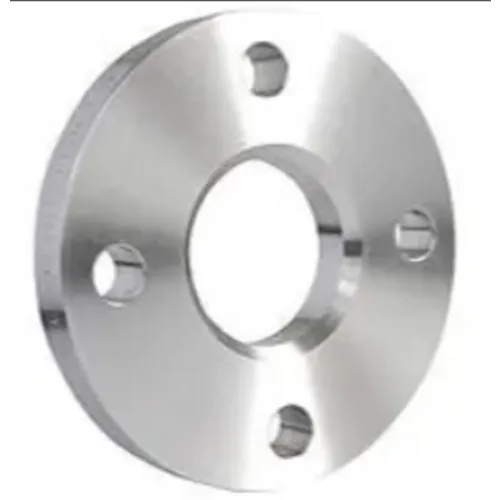-
Cangzhou Yulong Steel Co., Ltd.
-
Phone:
+86 13303177267 -
Email:
admin@ylsteelfittings.com
- English
- Arabic
- Italian
- Spanish
- Portuguese
- German
- kazakh
- Persian
- Greek
- French
- Russian
- Polish
- Thai
- Indonesian
- Vietnamese
- Zulu
- Korean
- Uzbek
- Hindi
- Serbian
- Malay
- Ukrainian
- Gujarati
- Haitian Creole
- hausa
- hawaiian
- Hebrew
- Miao
- Hungarian
- Icelandic
- igbo
- irish
- Japanese
- Javanese
- Kannada
- Khmer
- Rwandese
- Afrikaans
- Albanian
- Amharic
- Armenian
- Azerbaijani
- Basque
- Belarusian
- Bengali
- Bosnian
- Bulgarian
- Catalan
- Cebuano
- China
- China (Taiwan)
- Corsican
- Croatian
- Czech
- Danish
- Esperanto
- Estonian
- Finnish
- Frisian
- Galician
- Georgian
- Kurdish
- Kyrgyz
- Lao
- Latin
- Latvian
- Lithuanian
- Luxembourgish
- Macedonian
- Malgashi
- Malayalam
- Maltese
- Maori
- Marathi
- Mongolian
- Myanmar
- Nepali
- Norwegian
- Norwegian
- Occitan
- Pashto
- Dutch
- Punjabi
- Romanian
- Samoan
- Scottish Gaelic
- Sesotho
- Shona
- Sindhi
- Sinhala
- Slovak
- Slovenian
- Somali
- Sundanese
- Swahili
- Swedish
- Tagalog
- Tajik
- Tamil
- Tatar
- Telugu
- Turkish
- Turkmen
- Urdu
- Uighur
- Welsh
- Bantu
- Yiddish
- Yoruba

Nov . 12, 2024 05:39 Back to list
mandrel bent piping
Understanding Mandrel Bent Piping A Comprehensive Overview
Mandrel bent piping refers to a specific technique used to create curved sections of pipe and tubing that maintain a uniform radius and structural integrity. This method is especially prevalent in various industries, including automotive, aerospace, industrial equipment, and construction, where the efficient flow of gases or liquids is critical. In this article, we will explore the process, benefits, applications, and considerations regarding mandrel bent piping.
The Mandrel Bending Process
The fundamental aspect of mandrel bending is the use of a mandrel, which is a supportive device placed inside the pipe or tube during the bending process. This support prevents the walls of the pipe from collapsing or crumpling as it is being shaped. The process typically involves several steps
1. Preparation The pipe is measured and cut to the required length, ensuring it is clean and free of any debris.
2. Mandrel Insertion A mandrel, which can be either solid or flexible, is introduced into the pipe. The choice between types of mandrels depends on the material being bent and the desired outcome.
3. Bending Process The pipe is then placed in a bending machine where it is subjected to controlled pressure. The mandrel supports the interior, allowing for a smooth bend without deformation.
4. Finishing Touches After bending, the pipe may undergo further treatments such as welding, polishing, or surface treatment to enhance its durability and performance.
Benefits of Mandrel Bent Piping
One of the primary advantages of mandrel bent piping is the preservation of the pipe’s internal diameter throughout the bend. This characteristic is essential for maintaining the flow characteristics of fluids or gases, minimizing turbulence and pressure loss.
Other notable benefits include
- Aesthetic Appeal Mandrel bends offer smoother and more visually appealing curves compared to traditional bending methods, making them suitable for applications where appearance is important.
mandrel bent piping

- Strength and Integrity The process reduces the risk of kinks or deformation, enhancing the overall structural integrity of the pipes. This quality is especially important for high-pressure applications.
- Versatility Mandrel bending can be applied to various materials, including stainless steel, aluminum, and carbon steel. This versatility makes it an essential technique across different sectors.
Applications of Mandrel Bent Piping
Mandrel bent piping is utilized in a myriad of applications. In the automotive industry, for example, it is commonly used for exhaust systems, where exhaust flow efficiency is crucial. The aerospace sector often adopts mandrel bending for fuel lines and structural tubing in aircraft, where weight and strength are critical factors.
In industrial settings, mandrel bent piping can be found in HVAC systems, where smooth bends allow for optimal airflow and energy efficiency. Additionally, the construction industry uses it for railing and structural assemblies, where aesthetic considerations and safety standards go hand-in-hand.
Considerations in Mandrel Bending
While mandrel bending offers numerous advantages, there are several considerations to keep in mind
- Cost The initial setup and machinery for mandrel bending can be more expensive than other bending methods. This factor may affect the feasibility of using this technique for smaller projects.
- Material Compatibility Not all materials are suitable for mandrel bending. Understanding material properties will help determine if the mandrel bending process is applicable.
- Lead Times The process can be more time-consuming than simpler bending techniques, particularly for complex shapes or large quantities.
Conclusion
Mandrel bent piping is an essential technique in various industries, offering a balance of strength, aesthetic appeal, and performance. By understanding the benefits, applications, and considerations of this process, stakeholders can make informed decisions on how to effectively incorporate mandrel bent piping into their projects. Whether it’s for an automotive exhaust system, a fluid transport line, or a structural application, mandrel bending continues to play a critical role in driving innovation and efficiency across numerous fields.
Latest news
-
ANSI 150P SS304 SO FLANGE
NewsFeb.14,2025
-
ASTM A333GR6 STEEL PIPE
NewsJan.20,2025
-
ANSI B16.5 WELDING NECK FLANGE
NewsJan.15,2026
-
ANSI B16.5 SLIP-ON FLANGE
NewsApr.19,2024
-
SABS 1123 FLANGE
NewsJan.15,2025
-
DIN86044 PLATE FLANGE
NewsApr.19,2024
-
DIN2527 BLIND FLANGE
NewsApr.12,2024
-
JIS B2311 Butt-Welding Fittings LR/SR 45°/90° /180°Seamless/Weld
NewsApr.23,2024











